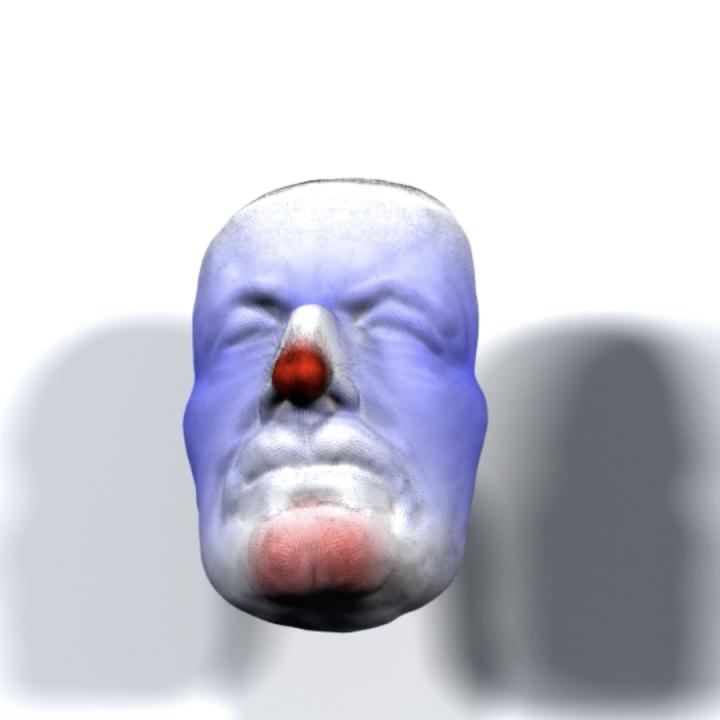How Star Wars helped visualise the biology of sperm
Plus, the secret of mosquito stealth is revealed and faces grow from flat disks


Mosquito flight and very small robots
Sneaky mosquitoes fill up on blood and disappear before we have the chance to swat them away. They're in and out without so much as a tickle, and their irritating buzzing is often the first sign of a bite, and now, scientists have worked out why.

Fruit flies push off with their feet when they take off, launching themselves into the air with a little hop as their wings start to beat, but mosquitoes use a different tactic. They rely on their wings to get themselves airborne, flapping furiously for a chopper-like takeoff and barely using their legs at all.
Researchers from the University of California, Berkley and Wageningen University in the Netherlands, mapped the flight of mosquitoes using three high speed cameras, capturing images of hungry and blood-laden bugs at 125,000 frames per second to generate 63 slo-mo films.
They found that the mosquitoes started beating their wings furiously milliseconds before takeoff, ramping up to 600 beats per second as they ascended into the air. They barely used their legs to push up even when they were loaded down with blood - they just took longer, harder wing beats to compensate.
Next, the team want to look at landings to see if the bugs are as discreet on the way down as they are on the way up. And, best of all, they're hoping their data will be used to make tiny mosquito-inspired drones.
"These studies may also give tips about how to build very, very small robots. That is a field where miniaturization is a Holy Grail,"
Sofia Chang, University of California
Shape-shifting disks
Nature is brilliant at producing complicated shapes from simple beginnings, opening and closing a flower with the passing of the sun, or growing an entire human from a single egg. But this kind of biological shapeshifting has eluded engineers, until now.
A team at the Harvard John A. Paulson School of Engineering and Applied Sciences grew the face of physicist, Max Planck, from a flat disk.. And, using the same technology, they reckon they can grow any shape from any starting shape.
Get all the latest news, reviews, deals and buying guides on gorgeous tech, home and active products from the T3 experts

In biology, hormones called auxins twist plant stems towards the light by forcing the cells on one side to elongate. The structure becomes kinked, tipping the leaves towards the sun.
Here, the engineers adapted the same principle to fold artificial structures. They sandwiched two layers of elastic material together, programming each to respond differently to the same environment. Each layer swells or bends independently, changing the shape of the whole sheet.

Then, using a combination of physics and geometry, the team then developed a way to take the curves of a known shape and reverse engineer the patterns needed to grow them using the new material. Their algorithm can reverse engineer a structure in seconds, folding complex shapes like flowers, maps and faces from simple cylinders, sheets or discs.
"It paves the way for manufacturing advances in 4-D printing of shape-shifting optical and mechanical elements, soft robotics as well as tissue engineering."
L. Mahadevan, Harvard
Star Wars sperm
When a research duo decided to create a Star Wars parody to explain science to a public audience, they got more than they bargained for. What started out as a bit of fun ended up spawning a new way to simulate complex molecular dynamics.
The video, which shows sperm struggling to fertilise an egg, is accurate down to the minute wriggles of the cells’ tails. But the scientists weren't content with it just looking right. Under the hood, the motion is controlled by the molecules that drive the real thing.
The pair combined molecular simulation tools from the sciences with physics-based animation software from the entertainment industry, and fed their hybrid software with actual data. They recreated whirling molecular motors, attached them to nine long, structural molecules, and watched as the whole structure slid and twirled, producing the characteristic swirling movement of a sperm tail.

Not only does the result look like the real thing, it provides researchers with a new way to experiment with the dynamics of molecules across a range of scales, from whole cells to individual atoms. And, with a few tweaks, the system could be adapted for future research into infertility.
